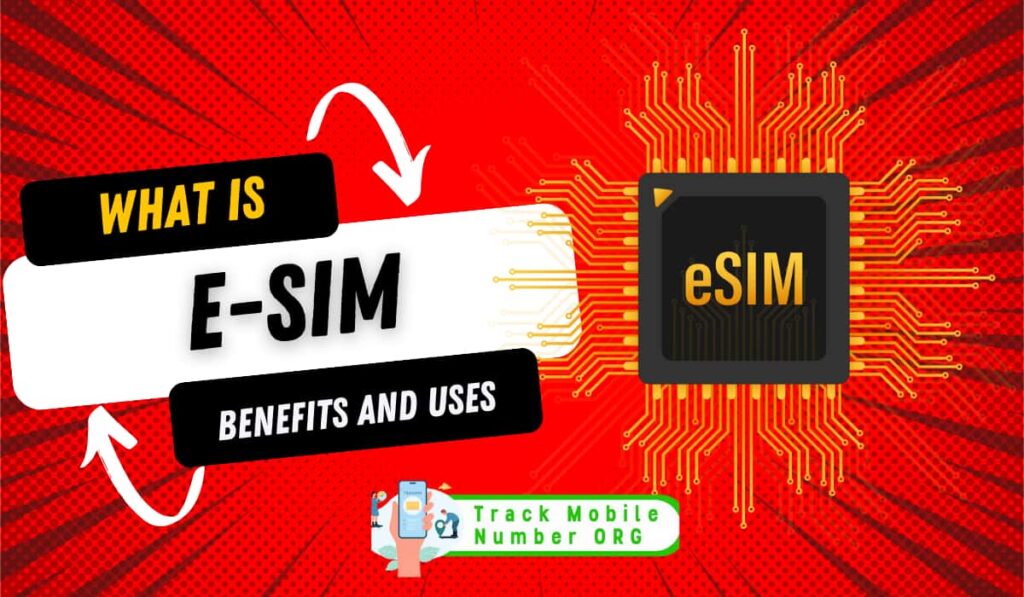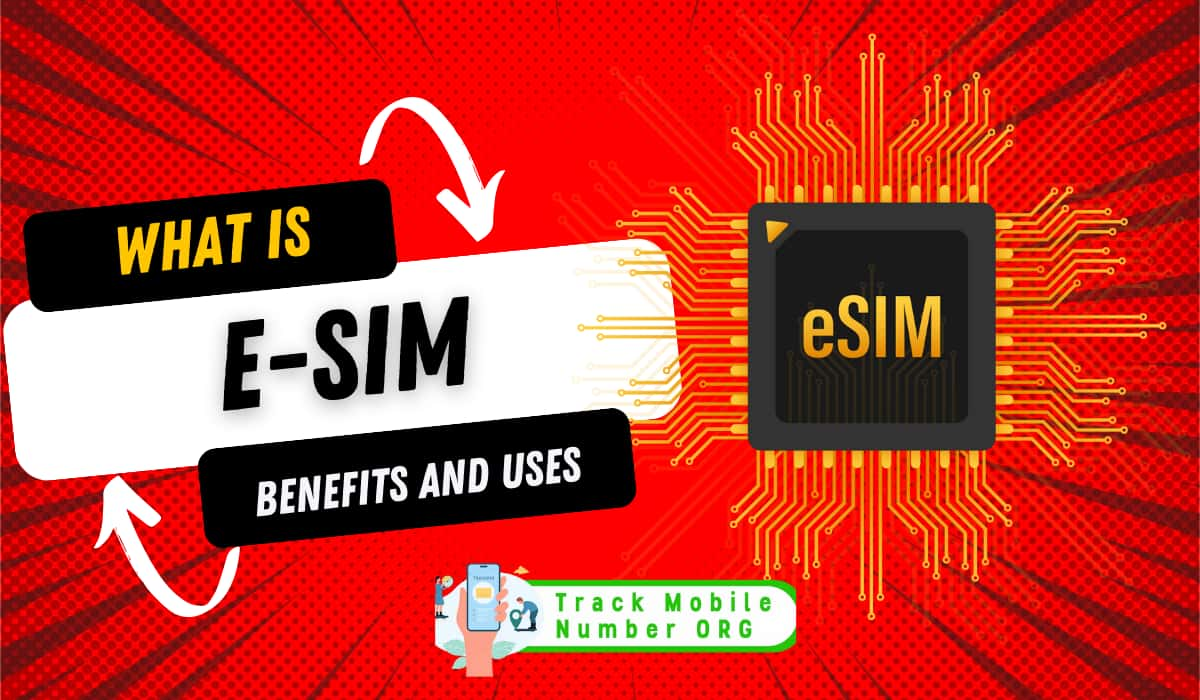As technology advances, our devices are becoming smarter and more compact. One such advancement in mobile technology is the e-SIM. But what exactly is an e-SIM, and how does it differ from the traditional SIM card?

In this article, we will learn about the concept of e-SIM, its benefits, the differences between an e-SIM and a normal SIM, how it works, and how you can activate an e-SIM with different operators in India.
1. What is e-SIM?
An e-SIM (embedded SIM) is a digital SIM that is built into your device. It allows you to connect to a mobile network without using a physical SIM card. Unlike traditional SIM cards, which you need to insert and remove from your device, an e-SIM is embedded directly into the device’s hardware. This means that you don’t need to switch SIM cards when changing carriers or travelling internationally; you can simply switch networks through your device’s settings.
Key Features of e-SIM:
- Embedded directly into the device
- No need for a physical SIM card
- Can store multiple network profiles
- Easily switch between carriers
2. Benefits of e-SIM
e-SIM technology comes with several benefits over traditional SIM cards:
| Benefit | Description |
|---|---|
| Convenience | No need to handle physical SIM cards and you can switch between networks or plans. |
| Space-Saving | Since the e-SIM is embedded, it saves space in your device, which in turn gives slimmer and more compact designs. |
| Multiple Profiles | e-SIM can store multiple profiles, and you can easily switch between different networks without swapping SIMs. |
| Remote Provisioning | You can activate your network service remotely without visiting a store or inserting a new SIM card. |
| Environmental Impact | Reduces the need for plastic SIM cards, contributing to less waste and a smaller environmental footprint. |
3. Difference Between e-SIM and Normal SIM
Here’s a comparison between e-SIM and Normal SIM
| Feature | e-SIM | Normal SIM |
|---|---|---|
| Physical Form | Embedded in the device, no physical card is required | Physical card that needs to be inserted into the device |
| Flexibility | Allows for easy switching between carriers and plans | Requires physical removal and insertion to change carriers |
| Storage | Can store multiple carrier profiles | Stores a single carrier profile |
| Activation | Can be activated remotely | Requires a physical SIM card to be activated |
| Space | Saves space inside the device | Takes up space and limits design possibilities |
4. Devices That Support e-SIM
e-SIM technology is increasingly supported by a range of modern devices, from smartphones to smartwatches. Here’s a list of popular devices that support e-SIM:
| Device Category | Models Supporting e-SIM |
|---|---|
| Smartphones | – Apple iPhone models: iPhone 14 series, iPhone 13 series, iPhone 12 series, iPhone 11 series, iPhone XS, XS Max, XR |
| – Samsung Galaxy models: Galaxy S23 series, S22 series, S21 series, S20 series, Z Fold series, Z Flip series | |
| – Google Pixel models: Pixel 7 series, Pixel 6 series, Pixel 5, Pixel 4 series | |
| Smartwatches | – Apple Watch Series: Series 3 (GPS + Cellular), Series 4, Series 5, Series 6, Series 7, Series 8, Ultra |
| – Samsung Galaxy Watch models: Galaxy Watch 4, Watch 3, Watch Active 2 | |
| Tablets | – Apple iPad models: iPad Pro (3rd generation and later), iPad Air (3rd generation and later), iPad (7th generation and later), iPad mini (5th generation and later) |
| – Microsoft Surface Pro X | |
| Laptops | – Microsoft Surface models: Surface Pro 7, Surface Pro X |
| – HP Spectre Folio |
5. How e-SIM Concept Works
The e-SIM technology works by embedding a small chip into your device. This chip acts like a traditional SIM card but with much more flexibility. Here’s how it works:
- Remote Provisioning: Instead of inserting a physical SIM card, you scan a QR code or use a carrier app to download a digital profile onto the e-SIM chip. This profile contains all the necessary information to connect to a mobile network.
- Multiple Profiles: The e-SIM can store multiple profiles from different carriers. You can easily switch between these profiles without changing physical SIM cards. For example, you can have one profile for your local carrier and another for international travel.
- Device Compatibility: e-SIMs are supported by various modern devices, including smartphones, tablets, smartwatches, and laptops. Brands like Apple, Samsung, and Google have incorporated e-SIM technology into their latest models.
6. How to Activate e-SIM for Different Operators in India
| Operator | Activation Process |
|---|---|
| Jio | 1. Send an SMS to 199 with the text “GETESIM eSIM number email ID.” 2. Confirm your request via SMS. 3. Receive a QR code via email. 4. Scan the QR code on your device to activate the e-SIM. |
| Airtel | 1. Send an SMS to 121 with the text “eSIM registered email ID.” 2. Confirm your request via SMS. 3. Receive a QR code via email. 4. Scan the QR code to activate the e-SIM. |
| Vi (Vodafone Idea) | 1. Send an SMS to 199 with the text “eSIM email ID.” 2. Confirm your request via SMS. 3. Receive a QR code via email. 4. Scan the QR code on your device to activate the e-SIM. |
| BSNL | 1. Visit the nearest BSNL customer service centre. 2. Provide your device details and request for e-SIM activation. 3. The customer service will assist you with the e-SIM setup and activation. |
Important Note: Before activating an e-SIM, ensure that your device is compatible with e-SIM technology. Most modern smartphones from brands like Apple, Samsung, and Google support e-SIMs, but it’s always best to check with your device manufacturer.
Conclusion
e-SIM technology is a huge leap forward in mobile connectivity. It offers convenience, flexibility, and environmental benefits over traditional SIM cards. With the ability to store multiple profiles and switch networks easily, e-SIMs are becoming the standard for modern devices.
Whether you are a frequent traveller, someone who values the latest technology, or just looking for a more smooth mobile experience, e-SIMs provide a better solution. As more devices and operators adopt e-SIM technology, it’s likely that traditional SIM cards will eventually become a thing of the past.


